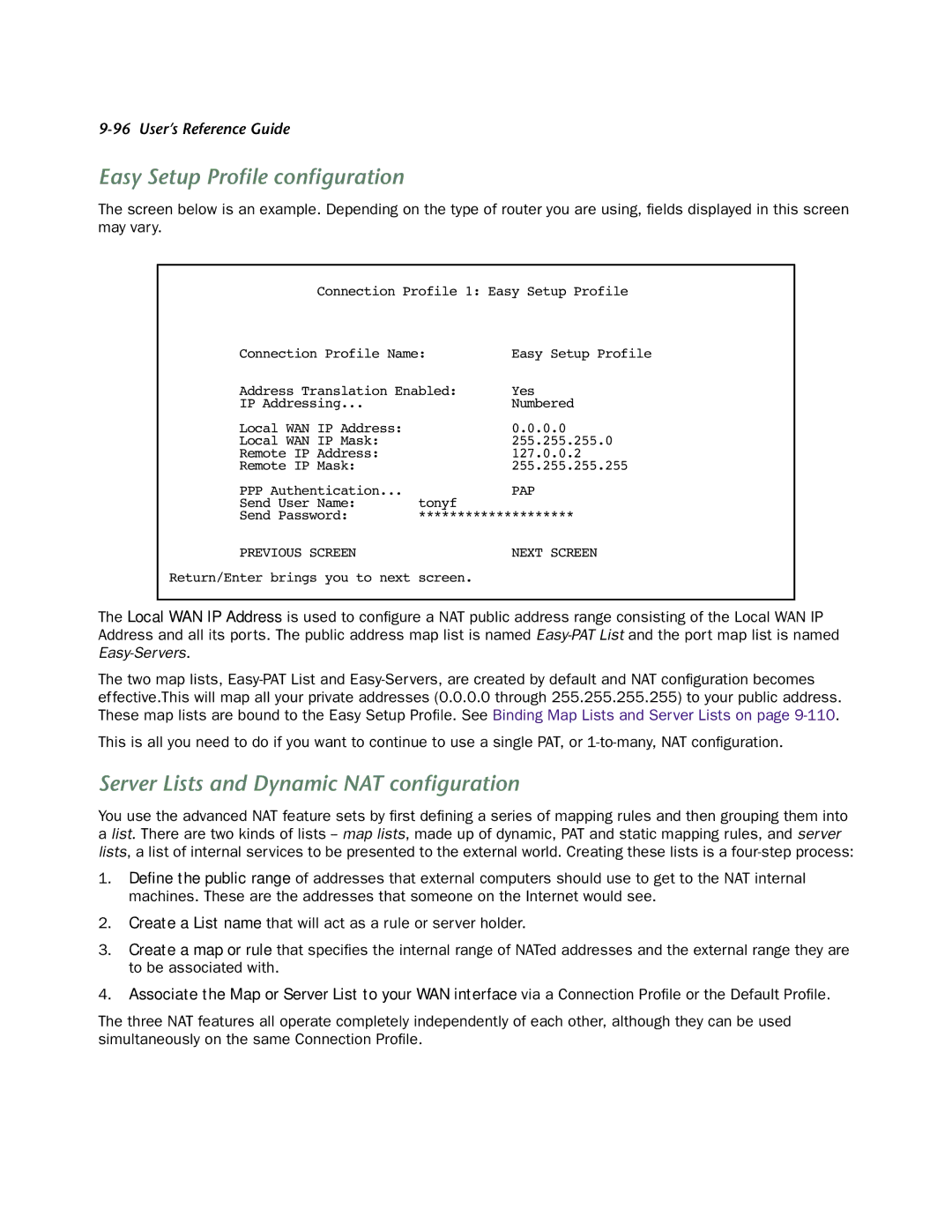
9-96 User’s Reference Guide
Easy Setup Profile configuration
The screen below is an example. Depending on the type of router you are using, fields displayed in this screen may vary.
Connection Profile 1: Easy Setup Profile
Connection Profile Name: | Easy Setup Profile | |
Address Translation Enabled: | Yes | |
IP Addressing... |
| Numbered |
Local WAN IP Address: |
| 0.0.0.0 |
Local WAN IP Mask: |
| 255.255.255.0 |
Remote IP Address: |
| 127.0.0.2 |
Remote IP Mask: |
| 255.255.255.255 |
PPP Authentication... |
| PAP |
Send User Name: | tonyf |
|
Send Password: | ******************** | |
PREVIOUS SCREEN |
| NEXT SCREEN |
Return/Enter brings you to next screen.
The Local WAN IP Address is used to configure a NAT public address range consisting of the Local WAN IP Address and all its ports. The public address map list is named
The two map lists,
This is all you need to do if you want to continue to use a single PAT, or
Server Lists and Dynamic NAT configuration
You use the advanced NAT feature sets by first defining a series of mapping rules and then grouping them into a list. There are two kinds of lists
1.Define the public range of addresses that external computers should use to get to the NAT internal machines. These are the addresses that someone on the Internet would see.
2.Create a List name that will act as a rule or server holder.
3.Create a map or rule that specifies the internal range of NATed addresses and the external range they are to be associated with.
4.Associate the Map or Server List to your WAN interface via a Connection Profile or the Default Profile.
The three NAT features all operate completely independently of each other, although they can be used simultaneously on the same Connection Profile.
